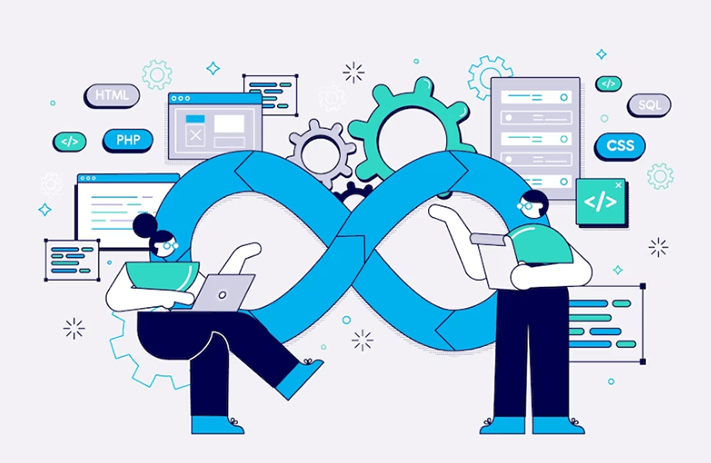Are you tired of unproductive and tedious meetings that drain your energy and waste your time? Say goodbye to those endless, dull gatherings, and discover the secrets to effective agile meetings in this comprehensive guide.
We’ll explore the fundamental principles of agile methodology and how it revolutionizes the way we collaborate. We’ll also introduce you to the wide array of agile meeting types, each with its own distinct purpose and flavor. And, because we know that life is too short for dull meetings, we’ll share practical tips along the way to help you make your agile meetings that much more enjoyable.
So, get ready to transform your team’s meetings and unlock your full potential with this ultimate guide to agile meetings!

Embracing Agile Meetings for a Modern Work Environment
In a world where time is our most valuable asset, it’s no wonder that the traditional, drawn-out meetings of yesteryear have become a major source of frustration for many professionals. But fear not, for there is hope!
Agile meetings have emerged as the modern-day solution to the productivity pitfalls of the conventional meeting culture. Designed to foster efficiency, collaboration, and adaptability, agile meetings are transforming the way teams work together in today’s go-go-go environment.
The Importance of Agile Meetings in a Fast-Paced Work Environment
As technology continues to advance at breakneck speed, businesses must be nimble and responsive to stay ahead of the competition. The agile methodology, with its emphasis on adaptability and collaboration, has proven to be an invaluable tool for navigating this ever-evolving landscape.
Agile meetings, the lifeblood of this approach, play a crucial role in ensuring that teams are equipped to tackle challenges head-on and adapt to change with grace.
Unlike traditional meetings, which often prioritize lengthy discussions and rigid agendas, agile meetings are designed to be short, focused, and purpose-driven. This streamlined approach not only conserves precious time but also enables teams to quickly identify and address issues, prioritize tasks, and make informed decisions on-the-fly.
By eliminating the time-wasting tendencies of conventional meetings, agile meetings create an environment that encourages constant progress, innovation, and growth.
How Agile Meetings Improve Team Efficiency and Collaboration
The benefits of agile meetings go far beyond simply saving time. By fostering a culture of open communication, teamwork, and continuous improvement, agile meetings have the power to bring teams closer together and elevate their performance to new heights.
Here are just a few ways that agile meetings improve team efficiency and collaboration:
- Clear communication: Agile meetings promote transparency and open dialogue, ensuring that team members are always on the same page and working toward a shared vision.
- Rapid decision-making: Agile meetings are designed to facilitate quick, informed decision-making, empowering teams to respond to challenges and opportunities with speed and confidence.
- Continuous improvement: By regularly reflecting on their performance and seeking opportunities for growth, teams that embrace agile meetings are better equipped to learn, adapt, and improve over time.
- Enhanced collaboration: Agile meetings create an environment where diverse perspectives are valued, and team members are encouraged to work together to overcome obstacles and achieve shared goals.
- Greater engagement: By keeping meetings short, focused, and relevant, agile meetings help to maintain team members’ engagement and enthusiasm, ultimately leading to higher levels of productivity and job satisfaction.
In conclusion, agile meetings are an essential component of today’s fast-paced work environment, offering a powerful approach to teamwork that enhances efficiency, fosters collaboration, and drives continuous improvement.
With the right mindset and strategies in place, your team can fully embrace the potential of agile meetings and unlock the secrets to success in the modern business world.
Stay tuned as we continue to explore the world of agile meetings and share practical tips and insights to help you master this game-changing approach. But first, let’s discuss agile meetings: the basics.

The Fundamentals of Agile Meetings: Laying the Groundwork for Success
Before exploring the different types of agile meetings and best practices for success, it’s essential to understand the core principles of the agile methodology and the critical role meetings play in this approach.
In this section, we’ll provide a brief overview of agile methodology, its core values, and the objectives that agile meetings aim to achieve … so you have a solid understanding of the driving forces behind agile meetings and how they can benefit your team.
Brief Overview of Agile Methodology and Its Core Principles
Agile is a project management and product development approach that centers around adaptability, collaboration, and rapid delivery of value.
It seeks to break down large projects into smaller, manageable tasks that can be completed in shorter time frames, known as sprints or iterations. This iterative approach allows teams to continuously reassess their progress, make necessary adjustments, and deliver incremental improvements.
The Agile Manifesto, the founding document of the agile movement, outlines four key values:
- Individuals and interactions over processes and tools: Agile emphasizes the importance of human collaboration and communication over rigid adherence to procedures or reliance on tools.
- Working software over comprehensive documentation: Agile prioritizes the delivery of functional products over extensive documentation, focusing on tangible results rather than bureaucratic paperwork.
- Customer collaboration over contract negotiation: Agile encourages close collaboration with customers, fostering a spirit of partnership and shared goals rather than a combative, contractual relationship.
- Responding to change over following a plan: Agile acknowledges that change is inevitable and champions flexibility and adaptability over rigid adherence to predetermined plans.
The Role of Meetings in Agile Methodology
Meetings are an integral part of the agile methodology, serving as the backbone for team communication, collaboration, and decision-making. Unlike traditional meetings, which can be long, unfocused, and draining, agile meetings are designed to be short, purpose-driven, and results-oriented. They provide the structure and rhythm needed to ensure that agile teams stay aligned, motivated, and continuously improving.
In the agile framework, meetings serve various purposes, such as:
- Aligning team members on objectives and priorities
- Identifying and addressing roadblocks or challenges
- Sharing updates on individual tasks and overall progress
- Collaborating on solutions and decision-making
- Reflecting on team performance and identifying areas for improvement
In the next section, we’ll delve deeper into the various types of agile meetings you might organize to achieve these goals.

Types of Agile Meetings A Comprehensive List
Agile teams use a variety of meeting types, each designed to address specific goals and objectives. In this section, we’ll explore the most common types of agile meetings and their purposes to help you understand how they might fit into your team’s workflow.
Daily Agile Meetings (Daily Stand-up/Scrum)
The Daily Stand-up, also known as the Daily Scrum, is a brief, daily meeting that enables team members to share updates on their work, identify any obstacles, and stay aligned on priorities. These meetings are typically held at the same time and place every day, and should be limited to 15 minutes.
During the Daily Stand-up, each team member briefly answers the following questions:
- What did I accomplish yesterday?
- What will I work on today?
- Are there any obstacles or impediments in my way?
The primary purpose of the Daily Stand-up is to maintain transparency, foster collaboration, and ensure that the team remains focused on its goals.
Sprint Planning Meeting
The Sprint Planning Meeting is held at the beginning of each sprint and serves as an opportunity for the team to plan its work for the upcoming iteration.
During this meeting, the team reviews the product backlog, discusses priorities, and selects the tasks that will be completed during the sprint. The team also estimates the effort required for each task and defines a sprint goal.
Sprint Planning Meetings typically last between one to four hours, depending on the length of the sprint and the complexity of the work involved.
Sprint Review Meeting
The Sprint Review Meeting, held at the end of each sprint, is an opportunity for the team to showcase the work completed during the sprint and gather feedback from stakeholders.
During this meeting, the team demonstrates the functionality of the completed tasks, discusses any challenges encountered, and reviews the sprint goal to assess whether it was met.
Sprint Review Meetings usually last between one to two hours and provide an opportunity for the team to receive valuable input from stakeholders, ensuring that the product remains aligned with customer needs and expectations.
Sprint Retrospective Meeting
The Sprint Retrospective Meeting is held after the Sprint Review Meeting and serves as an opportunity for the team to reflect on the sprint and identify areas for improvement. During this meeting, the team discusses what went well, what didn’t go well, and what can be improved in future sprints.
Sprint Retrospective Meetings typically last between one to three hours and are an essential part of the agile process, fostering a culture of continuous improvement and learning.
Product Backlog Refinement Meeting
The Product Backlog Refinement Meeting, also known as Backlog Grooming, is a regular session where the team reviews and updates the product backlog. During this meeting, the team adds new items, removes outdated items, prioritizes tasks, and refines estimates.
Product Backlog Refinement Meetings are typically held once per sprint and last between one to two hours. These meetings help to ensure that the backlog remains organized, up-to-date, and aligned with the project’s objectives.
Agile Project Management Meetings (Release Planning Meeting and others)
Agile project management meetings encompass various meetings that help teams plan and coordinate their work at a higher level. One such meeting is the Release Planning Meeting, where the team maps out the timeline for product releases and sets goals for each release.
Release Planning Meetings are usually held at the beginning of a project or at the start of a new release cycle and can last between a few hours to a full day, depending on the complexity of the project.
Other agile project management meetings might include milestone reviews, roadmap planning sessions, and risk assessment meetings. The frequency and duration of these meetings will vary depending on the project and the team’s needs.
Ad-hoc Meetings for Problem-Solving and Decision-Making
Ad-hoc meetings are unscheduled, informal gatherings that can be called whenever the need arises. These meetings typically address specific issues, challenges, or opportunities that require immediate attention and may involve brainstorming, problem-solving, or decision-making.
Ad-hoc meetings can be as short as 15 minutes or last as long as a few hours, depending on the complexity of the issue at hand. The key to successful ad-hoc meetings is to maintain a clear focus on the topic and ensure that they result in actionable outcomes.
As you can imagine, understanding the different types of agile meetings and their purposes is essential for ensuring that your team stays organized, aligned, and focused on its goals.
By leveraging the various agile meeting types effectively, you can foster a culture of collaboration, transparency, and continuous improvement that empowers your team to excel in today’s fast-paced business environment.
In the following sections, we’ll explore tips and best practices for agile meetings and provide guidance on how to create the perfect agile meeting agenda. But first, let’s take a look at how you can derive the maximum benefit from your daily agile meetings.

Making the Most of Your Daily Agile Meetings
Naturally, you’ll want your daily agile meetings to remain productive and valuable. That’s what we’ll help you with in this section by delving into some of the essential components of daily agile meetings.
So, we’ll explore the purpose and agenda of daily stand-ups, provide tips for optimizing their efficiency and effectiveness, and discuss common daily stand-up challenges and how to overcome them.
To kick things off, let’s review why agile teams have daily stand-ups in the first place …
The Purpose and Agenda of Daily Stand-ups
As mentioned earlier, the purpose of daily stand-ups is to provide a brief and focused opportunity for team members to share updates on their work, identify any obstacles, and ensure alignment on priorities.
The agenda for daily stand-ups is simple and follows the three-question format:
- What did I accomplish yesterday?
- What will I work on today?
- Are there any obstacles or impediments in my way?
Tips for Efficient and Effective Daily Stand-ups
Here are some tips to help you maximize the efficiency and effectiveness of your daily stand-up:
-
- Timebox the meeting: Timeboxing is a technique where a fixed amount of time is allocated for a specific task or activity, in this case, the stand-up meeting. For your daily stand-up, limit the meeting to 15 minutes, ensuring that each team member’s update is concise and to the point.
- Encourage standing: Have team members stand during the meeting, as it promotes a sense of urgency and helps maintain focus.
- Stay focused: Avoid diving into deep discussions or problem-solving during the stand-up. If necessary, schedule follow-up meetings to address specific issues.
-
- Rotate facilitators: Allow different team members to take turns facilitating the meeting to encourage engagement and build a sense of shared ownership.
Common Challenges in Daily Agile Meetings and How to Overcome Them
Daily agile meetings offer numerous benefits for team alignment and collaboration. However, they can also present certain challenges that might impede their effectiveness.
To ensure that daily stand-ups remain efficient and productive, it’s essential to recognize these challenges and tackle them proactively:
-
- Lack of focus: During daily stand-ups, team members may sometimes stray from the main agenda, causing the meeting to lose its focus.
To counter this, remind participants to adhere to the three-question format and avoid delving into unrelated topics.
If a particular issue requires more in-depth discussion, schedule a separate meeting dedicated to that subject.
- Inconsistent attendance: Inconsistent attendance can lead to a breakdown in communication and alignment among team members. Emphasize the importance of daily stand-ups for fostering collaboration and maintaining team cohesion.
Encourage punctuality and regular attendance by setting clear expectations and sharing reminders before each meeting. Reinforce the value of everyone’s input and how their contributions are vital to the team’s success.
- Lack of focus: During daily stand-ups, team members may sometimes stray from the main agenda, causing the meeting to lose its focus.
-
- Dominating voices: Sometimes, certain individuals may dominate the conversation during daily stand-ups, preventing others from sharing their updates or expressing their concerns.
To create an inclusive environment that allows equal opportunity for everyone to speak, establish time limits for updates and promote a culture of active listening. Encourage quieter team members to share their thoughts, and remind those who tend to dominate the conversation to give others a chance to speak.
By fostering an atmosphere of mutual respect and openness, teams can better collaborate and address any challenges that may arise.
- Dominating voices: Sometimes, certain individuals may dominate the conversation during daily stand-ups, preventing others from sharing their updates or expressing their concerns.

A Deep Dive into Agile Team Meetings
In this section, we’ll delve into the intricacies of agile team meetings, examining the roles and responsibilities of the Scrum Master, Product Owner, and team members.
We’ll also discuss how to foster a culture of continuous improvement and collaboration within your team, as well as share best practices to ensure your agile team meetings are efficient and effective.
The Role of Scrum Master, Product Owner, and Team Members in Agile Meetings
In agile meetings, each team member has a specific role to play:
- Scrum Master: The Scrum Master is responsible for facilitating meetings, ensuring adherence to the agile framework, and supporting the team in addressing any obstacles or challenges.
- Product Owner: The Product Owner is responsible for providing clarity on the product vision, prioritizing the backlog, and representing the customer’s interests during meetings.
- Team Members: Team members are responsible for actively participating in meetings, sharing updates on their work, and collaborating to address challenges and make decisions.
Fostering a Culture of Continuous Improvement and Collaboration
In order to create a culture of continuous improvement and collaboration in agile team meetings, it’s crucial to foster an environment where open communication is encouraged. Team members should feel comfortable sharing their thoughts, ideas, and concerns openly and honestly.
Additionally, promoting active listening helps team members build on each other’s ideas and suggestions. A culture where constructive feedback is sought and provided regularly can greatly aid in personal and team growth.
Lastly, emphasizing learning from mistakes and refining processes contributes to a positive and growth-oriented team culture.
Best Practices for Agile Team Meeting Attendees
To ensure a successful agile team meeting, you’ll want to adhere to the following best practices:
- Be prepared: Arrive at meetings with a clear understanding of the objectives and agenda, ready to contribute meaningfully to the discussion. Preparation is key to efficient and productive meetings.
- Stay engaged: Keep an active presence in discussions by asking questions, collaborating with teammates to address challenges, and making decisions. Active engagement promotes a more dynamic and effective meeting environment.
- Respect others’ opinions: Understand that everyone brings unique perspectives and experiences to the table. Be open to considering alternative viewpoints and embrace the diversity of thought within your team.

Crafting the Perfect Agile Meetings Agenda
The key to successful agile meetings lies in creating well-structured and tailored agendas that address the specific needs and objectives of each meeting.
In this section, we’ll explore the essential components of an effective agile meetings agenda, discuss how to tailor agendas to different meetings in the agile process, and provide guidance on incorporating feedback and adjusting agendas for continuous improvement.
Essential Components of an Effective Agile Meetings Agenda
A well-crafted agile meetings agenda should include the following components:
- Meeting objectives: Clearly outline the goals and desired outcomes of the meeting. This helps to set the direction for the discussion and ensures that all team members are aligned and focused on the same priorities. Clearly defined objectives also make it easier to measure the success of a meeting and identify areas for improvement.
- Agenda items: List the specific topics and tasks that will be addressed during the meeting, along with the time allocated for each. This helps to provide a roadmap for the discussion, keeping the team on track and ensuring that all relevant issues are covered. Be sure to prioritize the most important and time-sensitive topics, while also allocating time for open discussion and brainstorming.
- Attendees: Specify who will attend the meeting and their roles or responsibilities. This information helps to ensure that all relevant stakeholders are present and that team members understand their roles and contributions to the discussion. Including a list of attendees can also help to streamline communication and facilitate collaboration during the meeting.
- Logistics: Include details about the meeting’s date, time, location, and any necessary materials or resources. This information helps to ensure that team members are prepared and have access to the tools and resources they need to participate effectively in the meeting.
How to Tailor Agendas for Different Agile Meeting Types
Agile processes involve a variety of meeting types, each with its own unique objectives and requirements. To create tailored agendas for different agile meetings, consider the following strategies:
- Understand the meeting’s purpose: Each type of agile meeting serves a specific purpose, from daily stand-ups and sprint planning to sprint reviews and retrospectives.
As you craft your agenda, consider the unique objectives and requirements of each meeting type and adjust the agenda accordingly. This may involve incorporating different discussion topics, formats, or activities that are relevant to the meeting’s purpose.
- Allocate appropriate time: Each type of agile meeting has its own timebox, which is the maximum amount of time allocated for the meeting. Estimate the time needed for each agenda item and ensure that the overall meeting duration aligns with the timebox for that specific meeting type.
Be realistic about the time required for each discussion topic, and avoid overloading the agenda with too many items that cannot be adequately addressed within the given time frame.
- Prioritize key topics: Focus on the most important and relevant topics for each meeting, while being mindful of the team’s capacity and the meeting’s time constraints. Identify the highest-priority items that need to be addressed, and structure the agenda around these topics.
This will help to ensure that the team’s time and energy are directed toward the most critical issues and that important topics are not overlooked due to time constraints.
Incorporating Feedback and Adjusting Agendas for Continuous Improvement
Continuous improvement is a core principle of agile methodologies, and this applies to agile meeting agendas as well. To enhance the effectiveness of your agile meeting agendas, consider the following approaches:
- Seek feedback: Regularly solicit feedback from team members regarding the effectiveness of your meeting agendas and any suggestions for improvement. This can help to identify areas where adjustments may be needed and can provide valuable insights into the team’s preferences and needs.
- Reflect on meeting outcomes: Assess whether your meetings are achieving their objectives and identify any areas where the agenda may need adjustments. This may involve revisiting the meeting objectives, reevaluating the prioritization of agenda items, or adjusting the time allocated for specific topics. By reflecting on meeting outcomes, you can continuously refine your agendas to better serve the team’s needs and goals.
- Experiment and iterate: Be open to trying new approaches, making changes to your agendas, and refining your meeting processes over time. This may involve experimenting with different discussion formats, incorporating new activities, or adjusting the order of agenda items.By embracing an iterative approach, you can continuously enhance the effectiveness of your agile meeting agendas and adapt to the evolving needs and preferences of your team.

Agile Meetings: Rules for Success
To ensure the success of your agile meetings, it’s essential to follow certain rules and best practices that foster timely and efficient meetings, encourage open communication and trust, and maintain focus on goals and objectives.
In this section, we’ll dive into these crucial aspects and provide guidance on how to implement them in your agile meetings.
Ensuring Timely and Efficient Meetings with Timeboxing and Other Techniques
Maintaining timely and efficient agile meetings is vital to the success of your projects. To achieve this, consider the following techniques:
- Develop and maintain a consistent meeting rhythm: Establishing a consistent cadence for agile meetings can help teams stay organized, aligned, and focused on their goals. Develop a regular meeting schedule that works for your team and stick to it as much as possible.
- Timeboxing: Allocate a specific amount of time for each agenda item and stick to the schedule as closely as possible. Timeboxing helps prevent meetings from running over time and ensures that all topics are addressed within the allocated time frame.
- Start and end on time: Begin and end your meetings promptly to demonstrate respect for team members’ time and to maintain momentum. Punctuality sets the tone for the rest of the meeting and helps to establish a culture of accountability and professionalism.
- Limit distractions: Minimize interruptions and distractions during meetings by setting ground rules for technology use, side conversations, and other potential disruptions. Establishing a focused meeting environment enables team members to concentrate on the tasks at hand and contribute more effectively to the discussions.
- Assign roles: Designate specific roles for team members during meetings, such as timekeeper, facilitator, or note-taker. This can help maintain structure and efficiency in the meeting and ensure that responsibilities are clearly defined and shared among team members.
Encouraging Open Communication, Transparency, and Trust among Team Members
Building a strong foundation of open communication, transparency, and trust is essential for effective collaboration in agile meetings. To foster these qualities:
- Create a safe space: Encourage team members to share their thoughts, concerns, and ideas without fear of judgment or retribution. This can be achieved by establishing a supportive meeting environment, using inclusive language, and actively seeking input from all team members.
- Make meetings engaging and interactive: Agile meetings should be dynamic and participatory, with active involvement from all team members. Encourage discussions, brainstorming, and collaborative problem-solving to create an engaging and interactive meeting environment.
- Be transparent: Share information openly and honestly, and encourage team members to do the same. Transparency helps to build trust, facilitates informed decision-making, and enables the team to work together more effectively.
- Show empathy: Demonstrate understanding and support for your teammates, and work together to address challenges and find solutions. Actively listen to team members’ concerns and acknowledge their emotions, experiences, and contributions.
- Encourage constructive feedback: Foster a culture where team members regularly seek and provide feedback to help each other grow and improve. Provide guidance on how to deliver feedback constructively and ensure that it’s focused on specific actions or behaviors, rather than personal characteristics.
- Celebrate successes and recognize achievements: Agile meetings should also be an opportunity to recognize and celebrate team members’ accomplishments and milestones. Acknowledging successes helps to maintain motivation and foster a positive team culture.
The Importance of Staying Focused and Goal-Oriented During Agile Project Meetings
Maintaining focus and a goal-oriented mindset during agile project meetings is crucial for driving progress and achieving desired outcomes. To accomplish this:
- Establish clear objectives: Ensure that the goals and desired outcomes of each meeting are well-defined and understood by all team members. This clarity helps to guide discussions and decision-making and prevents the meeting from devolving into unrelated topics.
- Prioritize tasks and topics: Focus on the most important and relevant issues during meetings, and avoid getting sidetracked by less critical matters. This prioritization ensures that the team’s time and energy are directed toward the most impactful tasks and decisions.
- Keep discussions on track: Actively guide conversations to stay focused on the meeting’s objectives and steer the discussion back on track when necessary. This may involve redirecting conversations, summarizing key points, or asking targeted questions to refocus the team’s attention.
- Review progress: Regularly assess the progress made during meetings and adjust your approach as needed to ensure that goals are being met. This review process may involve re-evaluating priorities, addressing obstacles, or recalibrating expectations to better align with the project’s objectives and constraints.
- Emphasize action items and follow-ups: To ensure that agile meetings drive progress and results, always conclude each meeting with a clear summary of action items, decisions made, and follow-up tasks for team members.
- Maintain accountability: Encourage team members to take ownership of their tasks and responsibilities, and hold each other accountable for meeting deadlines and delivering results. This sense of shared responsibility helps to keep the team focused on achieving its goals and fosters a culture of mutual support and commitment.
- Foster a continuous improvement mindset: Agile meetings should be an opportunity for teams to learn, grow, and improve. Encourage regular reflection on meeting effectiveness and solicit feedback from team members to identify areas for improvement.
Conclusion
Now that you’re equipped with the knowledge, tips, and best practices needed to create effective, collaborative, and engaging agile meetings, it’s time to put them into action!
By fostering a culture of open communication, collaboration, and continuous improvement, you can transform your meetings into dynamic, productive, and engaging experiences that drive success.
Remember, the key to agile meetings success lies in staying focused on your objectives, being adaptable, and embracing the journey as you and your team work together to achieve your goals. We encourage you to implement the strategies shared in this article and to continuously refine your approach to agile meetings as you learn and grow with your team.
Thanks for joining us on this journey to agile meeting mastery. We wish you the best of luck, and happy collaborating!





























































